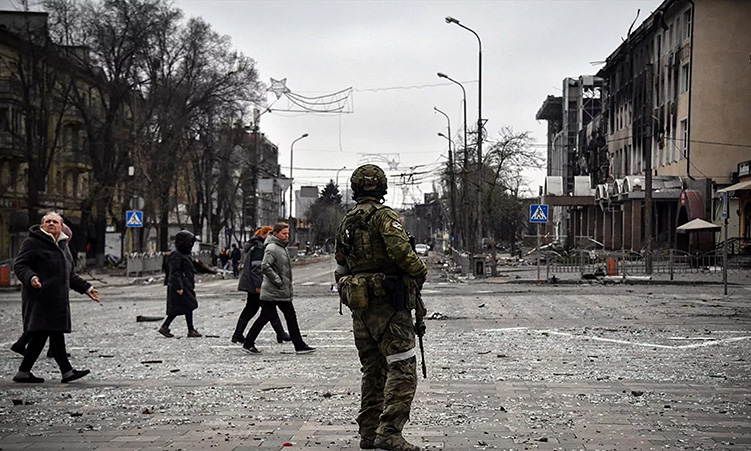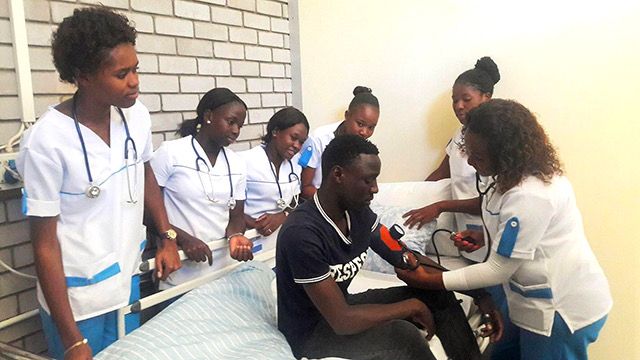NAMIBIA is classified as a lower-middle-income country by the World Bank, but a large number of its inhabitants live in deprivation. While this is a largely undisputed fact, there is much less agreement on how to measure the extent of poverty and deprivation in the country.
This came to the fore in the recent argument between the Namibian Economic Policy Research Unit (Nepru) and the Basic Income Grant (BIG) Coalition over whether members of the BIG pilot community Omitara should be considered poor or not. Officially, the Namibian government has relied on a poverty measure based on the proportion of household expenditure that is spent on food. Households that spend more than 60 per cent of their expenditure on food are deemed to be ‘poor’ and those that spend 80 percent or more on food are deemed to be ‘severely poor’. In November last year, the Central Bureau of Statistics launched a report introducing a new poverty line following the so-called Cost of Basic Needs (CBN) methodology, which estimates the cost of a bundle of essential food and non-food goods. Based on data from the Namibia Household Income and Expenditure Survey (NHIES) 2003/04, the report demonstrated that poverty, and in particular severe poverty, was much more prevalent than previously thought. More research based on the new approach has since then been undertaken by the Institute for Public Policy Research, which shows that while poverty appears to be more prevalent, the declining trend over time is also more pronounced. The main findings of this new research are presented in this article. Fraught with problemsThe CBN method of measuring poverty is indeed a big step forward for Namibia, bringing the country in line with best practice internationally. The old food-share approach was fraught with problems regarding its suitability to indicate household welfare as measured by per capita consumption expenditure. According to this approach, both NHIES 1993/94 and 2003/04 show that ‘severely poor’ households actually have higher per capita consumption than ‘poor’ households – a rather puzzling finding. From a policy point of view, the food-share approach also has some serious drawbacks. One could, for example, imagine a case where recipients of food aid are pushed into measured ‘poverty’ as this counts towards their food consumption expenditure, according to the NHIES methodology. The irony is obvious: the government’s attempt to alleviate poverty has actually made it worse, if only according to the applied measure, and not in reality. In terms of policy evaluation, this may be the most powerful argument to discredit the usefulness of the food-share measure in comparing poverty levels.With a number of adjustments regarding the comparability of the underlying consumption data, the new CBN poverty line can also be calculated for the NHIES 1993/94 data in order to see how poverty has evolved over time in Namibia. The results show that in the 10 years between the two surveys, poverty fell from 58 per cent of individuals in 1993/94 to 38 per cent in 2003/04. This reduction in poverty incidence is much more rapid than previously thought, but the level of poverty is also significantly higher than under the old food-share method, which yielded a reduction from 33 per cent to 27 per cent. The revision is even more pronounced for the population share of the severely poor, which under the old measure was deemed to have fallen from 7 per cent to only 3 per cent, but according to CBN decreased from 47 per cent to 20 per cent of individuals. REGIONAL VARIATIONSContrary to the food-share approach, the CBN-based measures show a larger absolute decrease of poverty in rural than in urban areas. When looking at the 13 regions, it appears that Kavango, and to a lesser degree Hardap, have fared worse in terms of poverty reduction than the other regions. Caprivi, Kunene and Oshana, on the other hand, appear to have improved significantly in comparison to the average. In 2003/04, Kavango, Ohangwena and Oshikoto had the highest headcount of poverty, while Khomas and Erongo had the lowest incidence. More research should be undertaken to examine the reasons behind this observed regional variation. Despite attempts to set the measurement of poverty on an objective, scientific footing, it is invariably subject to numerous assumptions and the choice and quality of the underlying data. Limitations for quantitative poverty analysis based on the NHIES are posed by a number of issues: the sample size does not allow for precise poverty estimates below the regional level; and we are not able to trace individual households over time, so we can only compare averages. Perhaps most importantly, there is no data on rural prices, which may be different from the urban prices on which the Namibian Consumer Price Index (CPI) is based. Significantly higher expenditure for non-food items in urban areas at a given level of food spending indicates that there may be differences in relative, and probably absolute, price levels. For the purposes of the two NHIES, however, we have to assume that N$100 in rural areas buys the same amount of goods as N$100 in towns and cities. It is commendable that the third NHIES round, which started last month, will be accompanied by regional price surveys to take account of regional variations in the cost of living.Measuring poverty is in many ways more art than science, and given the necessary assumptions there will always be room for disagreement. Poverty is a multifaceted phenomenon that goes beyond the mere economic, including dimensions such as health, education, access to public services and freedom of choice in one’s daily life. Nonetheless, consumption expenditure is an important indicator of welfare, which the new CBN poverty line measures more objectively than before. If used correctly, and with an awareness of its limitations, it puts a powerful tool at the disposal of policy makers to design interventions that are better targeted to alleviate poverty. * This article is based on the IPPR paper ‘The Estimation of Poverty Trends in Post-independence Namibia’ by Matthias Schmidt. The paper is available from http://www.ippr.org.na
Stay informed with The Namibian – your source for credible journalism. Get in-depth reporting and opinions for
only N$85 a month. Invest in journalism, invest in democracy –
Subscribe Now!










